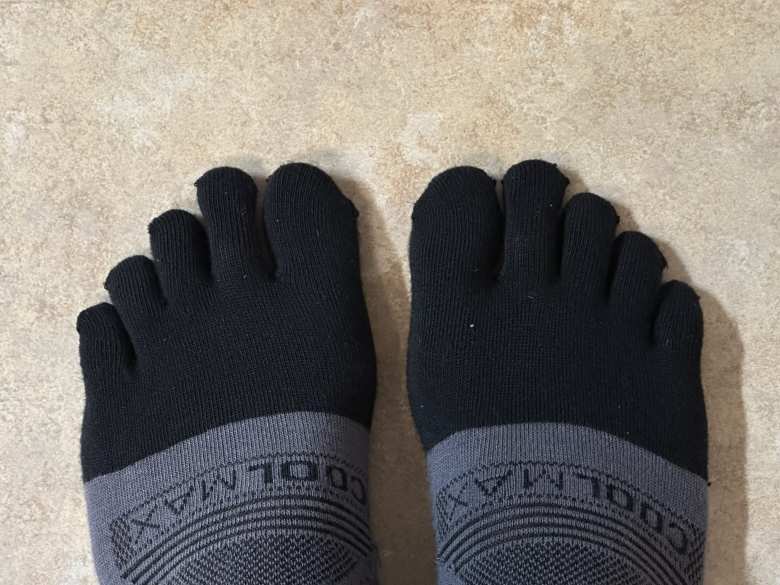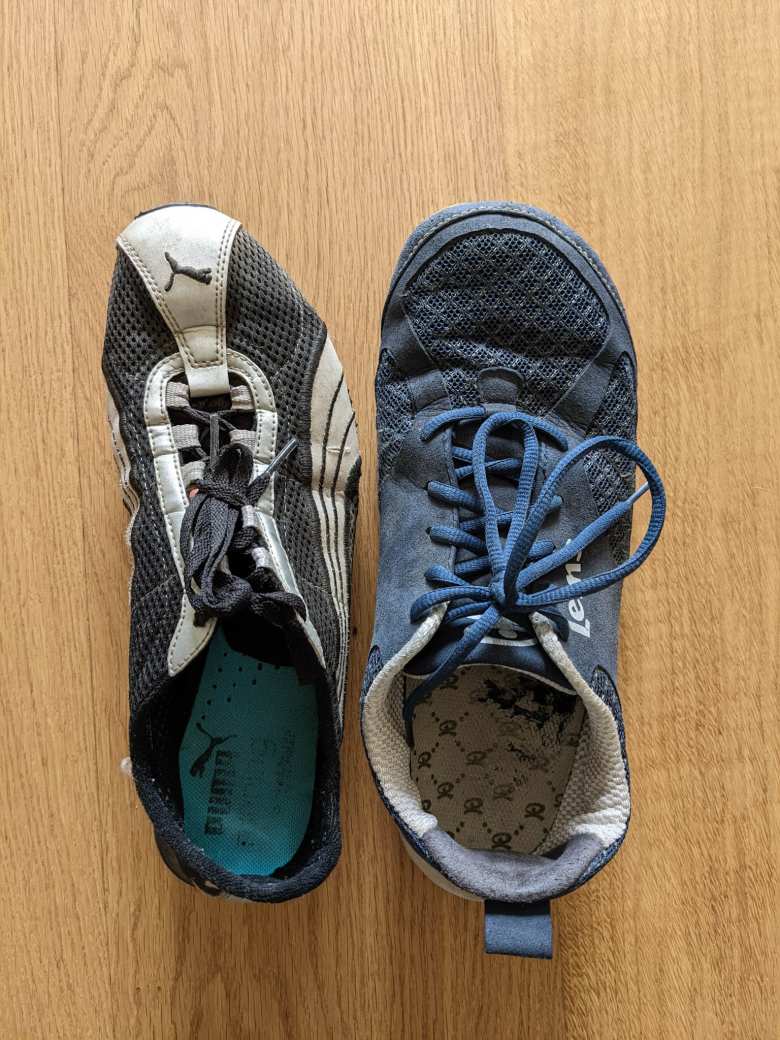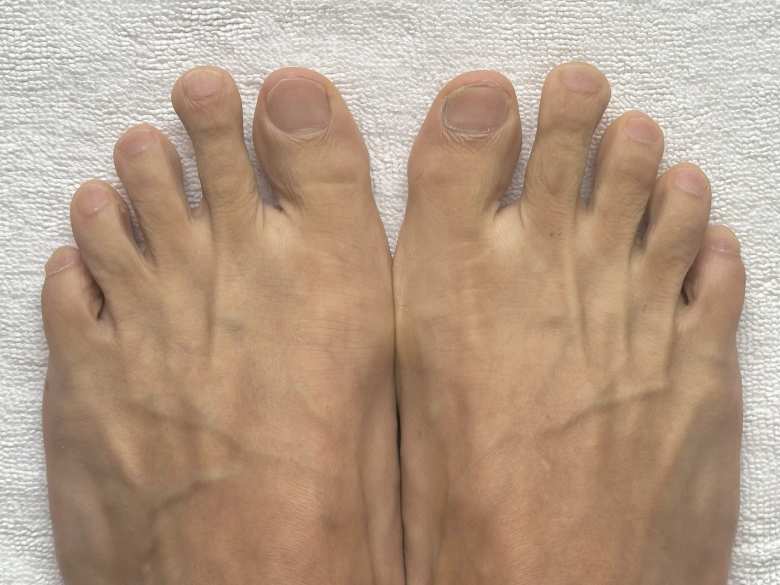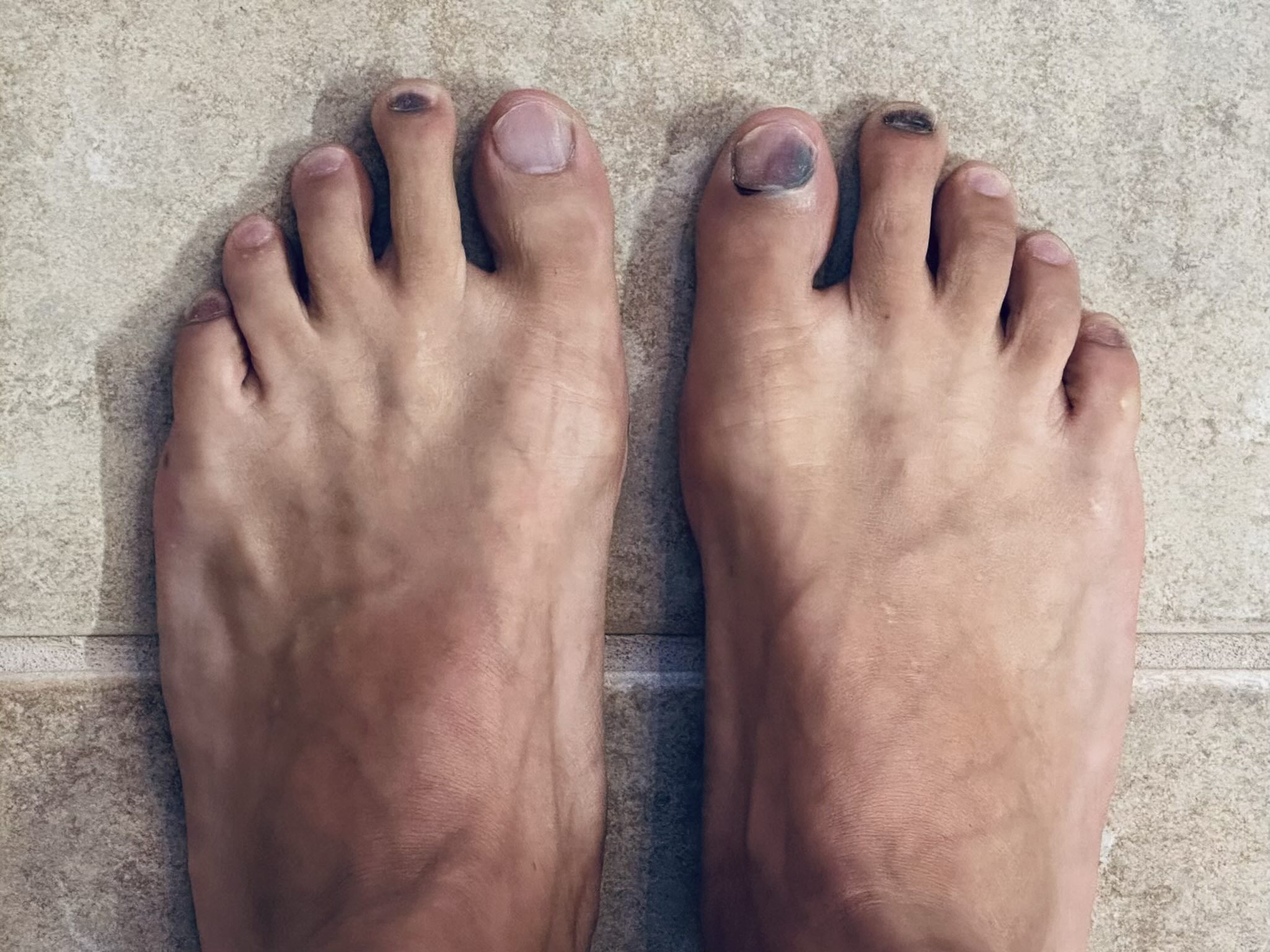Runner’s Toe: How Long Does It Take for Black Toenails to Clear Up, and How to Prevent Them
Completing the 2023 Marine Corps Marathon was a thrilling experience for me, especially since I pushed my limits by running an extra 24 km that day, totaling 66 km (41 miles). However, this feat left me with an unpleasant souvenir: runner’s toe. My big toe on the right foot and the second toes on both feet turned black, while my little toes became slightly blackened or yellowish and thickened for months.
Thankfully, none of the toes weren’t painful, just unsightly. It took 9 months for my toenails to clear up, from the end of October 2023 to the end of July 2024.
What Causes Runner’s Toe?
Runner’s toe, also known as black toenail, is primarily caused by repetitive trauma to the toenails. In my case, the long distance and the intense pace (averaging under 8:00/mile) contributed to this condition. When your toes repeatedly hit the front of your shoes, the blood vessels under the toenails can break, causing blood to pool and discolor the nail. The swelling of my feet due to the heat (high 70s Fahrenheit) during the marathon exacerbated the problem, making the trauma to my nails even more severe.
Why Did My Little Toes Change Color?
The slight blackening or yellowing and thickening of my little toes were likely due to similar repetitive trauma, albeit less severe.
These changes could also sometimes be attributed to toenail fungus, which thrives in the moist, warm environment of running shoes, especially when they’re not adequately aired out. However, in my case, I am fairly certain the yellowing and thickening were caused by repetitive trauma and not fungi.
Healing Timeline: Why Did It Take 9 Months?
Toenails grow at a slower rate compared to fingernails, which explains the extended healing period. On average, a toenail grows about 1.5 mm per month, while fingernails grow approximately 3 mm per month. Given that toenails are thicker and larger, especially the big toe, it took a long time for the black parts to grow out. The blackened portion of my big toe’s nail started to separate and fall off after about 6 months, after which it was less noticeable.
Since the toenail on my big toe is about 14 mm long from cuticle to end, it makes sense that it would take 9 months to heal. My other toenails, being much shorter, needed fewer months to return to normal.
Prevention Tips
Preventing runner’s toe is crucial for maintaining good-looking feet and enjoying your runs without discomfort. Below are five effective strategies–I now do all five of them when I run distances longer than a half marathon.
1. Trim Your Toenails
Keeping your toenails short, especially before a long run, can reduce the risk of them hitting the front of your shoes. It also prevents them from poking, scraping, or abrading adjacent toes.
2. Heel Lock Your Laces
Using a heel lock technique can prevent your toes from jamming against the shoe’s front. Here’s a helpful YouTube video on how to heel lock running shoe laces:
3. Wear a Longer Running Shoe
I got black toenails using Saucony Endorphin Pro 3 shoes in size 9.5. If I were to do a long race (say, over 10 miles) with that shoe model again, I should consider getting size 10 instead.
As a rule of thumb for your running shoes, you should ensure there’s a thumb’s width of space between the front inside of the shoe and your longest toe.
If you are wondering what to do with your old shoes that gave you black toenails, you have a few options. If they still have a lot of useful life on them, you can sell them on eBay. Or you could keep them but use them only for shorter runs for which getting runner’s toe is less likely.
If they are at their end of life anyhow, drop them off at a running store for recycling instead of throwing them in the trash.
4. Wear a Wider Running Shoe
Brands like Saucony and New Balance offer wide variations of their models, while minimalist (like Lems and Xero) and zero-drop (like Altra) shoes usually come with a wider toe box, providing more space for your toes.
5. Use Toe Socks
Toe socks separate your toes, which can prevent black toenails and blisters. Injinji is a well-known brand among runners. But they are a bit pricey, so I first tried (successfully) some toe socks from Temu that were a fraction of the price but surprisingly good quality.

I used them during the Pilot Hill 25K trail race and thought they were fantastic. I’ll be using them on all my long runs from now on.
A Word of Caution

In regards to Tips #3 and #4 above, be cautious about wearing shoes that are too long or wide, as they can increase the risk tripping and falling. I never got black toenails with Lems Primal 2 shoes in size 10, but I did trip several times on uneven pavement during long trail runs. Their increased “dead space” around the front of the shoe would catch on roots and rocks.
Unfortunately, I know firsthand from a particularly disastrous fall that tripping and falling can be a much worse thing that getting runner’s toe. Black toenails are ugly, but at least they clear up in less than a year and are hidden away under socks and shoes in the meantime. Scars that result from falling and tearing up skin, on the other hand, are often forever.
While runner’s toe can be an annoying and unsightly issue, it’s preventable with the right strategies. By taking care of your toenails and choosing the right footwear, you can enjoy your runs without the worry of black toenails. Happy running!

